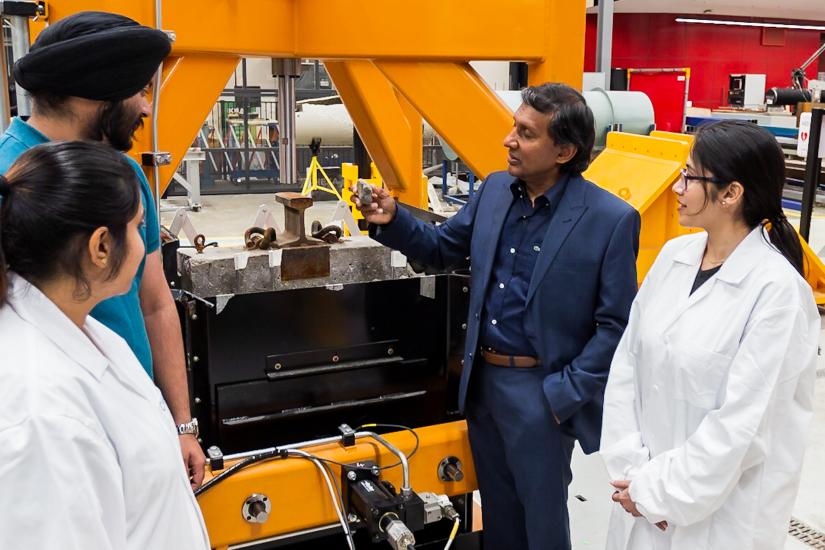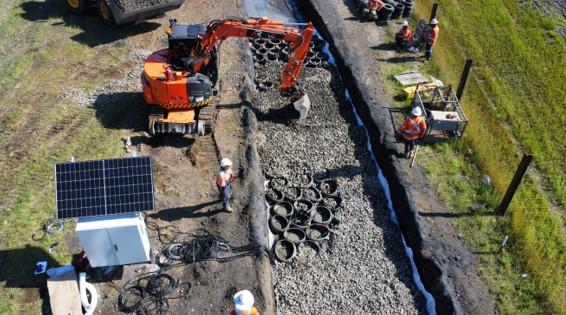International acclaim for UTS railway engineering expert
Distinguished Professor Buddhima Indraratna has won the 2024 VI José Entrecanales Ibarra Civil Engineering Award in recognition of his groundbreaking research, which has improved the safety, efficiency and sustainability of critical infrastructure projects around the world.

Distinguished Professor Buddhima Indraratna has won the 2024 VI José Entrecanales Ibarra Civil Engineering Award, a prestigious international award that will be presented at a ceremony in Madrid in May, where the Queen of Spain is expected to be Guest of Honour.
President of the Ibarra Foundation, Jose Miguel Atienza Riera, said Professor Indraratna’s contributions to the field of civil engineering “have not only been exemplary but have also set new standards of excellence and innovation.”
“Your work, which stands at the intersection of engineering brilliance and practical application, has significantly advanced our understanding and capabilities within the discipline,” he said.
Professor Indraratna is leading the world in the development of sustainable engineering solutions for railway design. He is the director of the University of Technology Sydney (UTS) Transport Research Centre, where he leads a team focused on designing smart transportation systems.
Dean of the UTS Faculty of Engineering, Professor Peta Wyeth, congratulated Professor Indraratna on this significant achievement, which follows from his recent Australia Day Honours.
“Congratulations to Buddhima for this wonderful international recognition for his eminent contributions to the field, particularly in the advancement of transportation infrastructure through geotechnical expertise,” said Professor Wyeth.
For the first time in Australia, we are developing computer-based models based on machine learning principles to predict the extent and the rate at which track degradation occurs on our heavy-haul networks.
Distinguished Professor Buddhima Indraratna
Australia's rail network drives economic growth, generates employment, and fosters sustainable urban and rural development. With a $29.8 billion contribution to the economy, it facilitates crucial freight transport for industries like mining and agriculture.
Rail tracks are constructed on a coarse granular material called ballast, but heavy freight trains, high-speed passenger trains, and adverse weather conditions degrade it, compromising safety and efficiency. The rail industry invests millions annually in maintenance and repairs to address these challenges.
Professor Indraratna has developed a range of unique infrastructure testing and simulation facilities, located at UTS Tech Lab in Botany.

Image: Supplied
“For the first time in Australia, we are developing computer-based models based on machine learning principles to predict the extent and the rate at which track degradation occurs on our heavy-haul networks,” said Professor Indraratna.
“This will help us to improve our track design procedures to extend the longevity of track infrastructure. Both Sydney Trains and the Australian Rail Track Corporation (ATRC) are assisting in this work through extensive data that has been collected over the past decade or more.”
Collaborating with Ecoflex Australia and Sydney Trains, Professor Indraratna also developed the world’s first rail tracks built over recycled rubber tyres infilled with waste materials.
"This patented innovation called Tyre Cell Track Foundation has been shown to improve track longevity, reduce maintenance costs, alleviate potential soil fluidization, and minimise noise and vibration,” said Professor Indraratna.
“We have developed three different techniques for using recycled tyres that can be combined to improve rail systems: a recycled rubber tyre cell foundation infilled with waste rock particles; a rubber intermixed ballast stratum; and energy absorbing recycled-rubber mats.
“These techniques have been put to the test at Transport for NSW’s Chullora site, where they went through a rigorous design and assessment process and are now being used by Pacific National Trains.”
Research on the use of energy absorbing recycled-rubber mats to reduce the breakdown of ballast was recently published in Géotechnique and other top-tier journals, and Professor Indraratna has also launched a new edition of his book Advanced Rail Geotechnology-Ballasted Track.
